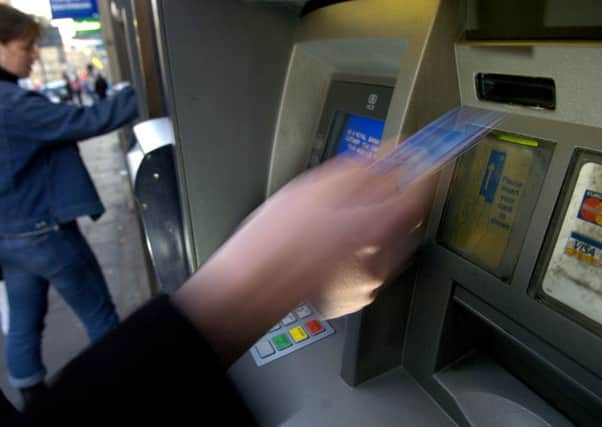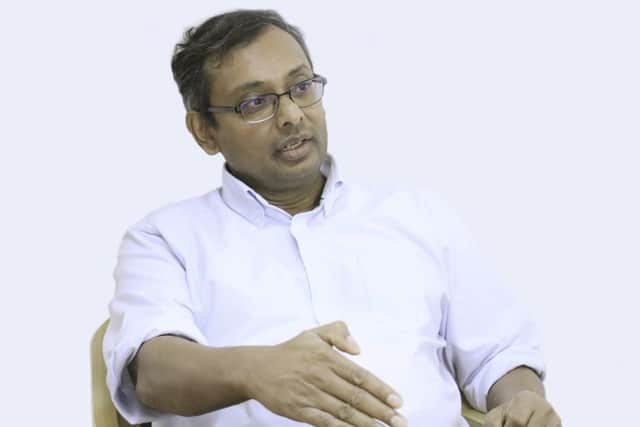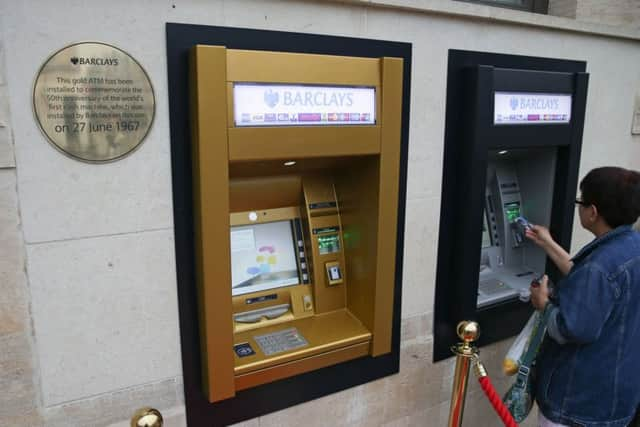What will the ATMs of the near future look like?
This article contains affiliate links. We may earn a small commission on items purchased through this article, but that does not affect our editorial judgement.


Aravinda Korala, founder and chief executive of Edinburgh-based ATM software specialist KAL, believes we could soon be using the devices to arrange mortgages instead of visiting a bank branch to go though the paperwork.
While most people in the UK think of ATMs as a handy way of checking their balance and withdrawing cash – or possibly making a deposit if they can find the right machine – the picture is very different in countries like China, where consumers can choose from more than 100 different transactions.
Advertisement
Hide AdAdvertisement
Hide Ad

Speaking to The Scotsman from Copenhagen, where he was attending an international fintech conference, Korala said: “Our ATM software in China has about 100 transactions. What they’re doing there is putting the kind of transactions you’d do in a bank onto the ATM. Some could be as simple as changing your name or address – you can’t do that at an ATM in the UK, but the US is not very different.
“On the other hand, in Spain, the transaction set is very rich. The question is, which is the right model, but the answer is quite complicated. Even though in China there are these 100 transactions, not many people are using a lot of them, so the business case can be questionable. Having said that, branches are a big problem as they’re very expensive to keep open.”
Korala added: “We think the answer is what we call remote teller-assisted transactions. We believe that, even if you can do some of these transactions on an ATM, people don’t like doing them if it’s too difficult or something they do rarely. But it’s not just about the simplicity – it’s about service.


“The halfway house is a machine where you can get someone to hold your hand – you could press a help button to get an online video connection, say with an expert in mortgages, and get an experience that’s almost like being in the branch. The person could be on the other side of the world, but it could be 24/7, in your language.”
• READ MORE: Collaboration ‘key to unlocking fintech potential’
He said there is a “lot of excitement” in the industry about remote teller-assisted transactions “and I think that’s the next big revolution in ATM technology”.
Advertisement
Hide AdAdvertisement
Hide Ad“People think of ATMs as something that just gives you cash, but it’s a public machine that allows you to interact with your bank. And soon they’ll be able to do all the things you might do in a branch, with video assistance so you’re not on your own.”


Korala founded KAL in 1989. Europe is the company’s biggest market in revenue terms, followed by the US, while China is the largest when it comes to volumes.
The firm counts major international lenders such as China Construction Bank, Citibank, ING and UniCredit among its clients, but it has less of a presence in the UK, where it has worked with the Nationwide and Norwich & Peterborough building societies.
KAL employs about 150 people around the world, of whom a third are based at its Edinburgh headquarters, just off Easter Road.